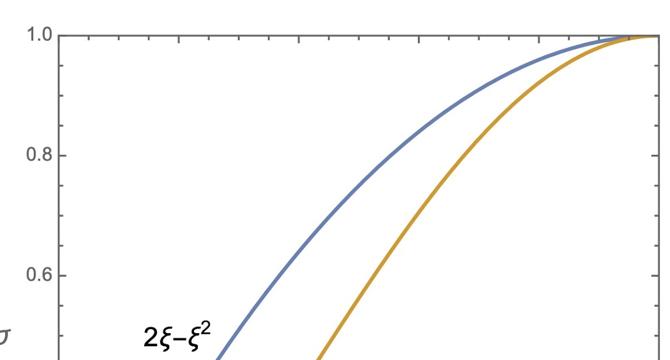Hobbieroth
3w
415

Image Credit: Hobbieroth
A Continuum Model for Volume and Solute Transport in a Pore
- Section 5.9 from Intermediate Physics for Medicine and Biology covers a model of solute flow through a pores in a membrane which derives the “reflection coefficient,” σ.
- The reflection coefficient σ accounts for the size of the solute particle. If the solute radius, a, is small compared to the pore radius, Rp, then solute can easily pass through and almost none is “reflected” or excluded from passing through the pore.
- The fifth edition of IPMB presents two models to calculate how the reflection coefficient varies with solute radius. The blue curve shows σ as a function of ξ = a/Rp, and represents the “steric factor” 2ξ − ξ2. The maize curve shows a more complex model that accounts for Poiseuille flow in the pore (no flow at the pore edge and a parabolic flow distribution that peaks in the pore center), and gives the reflection coefficient as 4ξ2 – 4ξ3 + ξ4.
- For plug flow, reflection occurs if the solute is within one particle radius of the pore edge. In that case, the number of particles that reflect grows linearly with particle radius.
- For Poiseuille flow, the size of the particle relative to the pore radius similarly plays a role. However, the flow is zero near the pore wall.
- For ξ approximately equal to one, for plug flow, when the solute particle is just slightly smaller than the pore radius, it barely fits. But for Poiseuille flow, the particle not only barely fits, but it blocks all the fast flow near the pore center and you only get a contribution from the slow flow near the edge.
- The model doesn't account for adjustment of the flow of solvent when the solute particle is relatively large are disrupts the flow. This can’t really be true.
- If a particle almost plugged a pore, it must affect the flow distribution. The Poiseuille model is most useful for small values of ξ, but the behavior at large ξ (near one) should be taken with a grain of salt.
- It’s useful to provide physical interpretations of mathematical expressions for analytical toy models for gaining insight.
- For those of you who might be disappointed to see Section 5.9 go, you can keep the 5th edition of the book for reference on continuum model for volume and solute transport in a pore.
Read Full Article
25 Likes
For uninterrupted reading, download the app